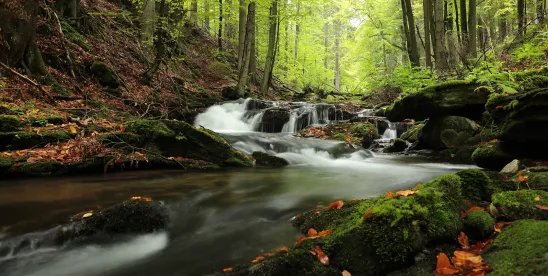Water Quality Standards Regulatory Revisions to Protect Tribal Reserved Rights
The U.S. Environmental Protection Agency (“EPA”) has finalized revisions to the Clean Water Act (“CWA”) Water Quality Standards (“WQS”) at 40 C.F.R. Part 131. The Final Rule will go into effect on June 3, 2024. The new rule considers Tribes’ explicit and implicit rights to natural and cultural resources. The revised regulatory framework expressly: (1) defines Tribal reserved rights; (2) establishes and clarifies the responsibilities of states regarding Tribal reserved rights in the WQS context; and (3) establishes and clarifies EPA’s role and responsibilities.
The rule outlines how Tribal reserved rights, defined as any rights to CWA-protected aquatic and/or aquatic-dependent resources reserved to Tribes, “either expressly or implicitly,” through treaties, statutes, or executive orders where Tribes assert these rights, must be considered when establishing both federal and state WQS. EPA’s stated purpose of the revisions is to provide “transparency and clarity” regarding the expectations of WQS where Tribal reserved rights are applicable. However, mandating inclusion of Tribal rights in WQS adds significant substantive requirements to the standards that applicants for CWA authorizations must meet and could result in more stringent conditions on such authorizations.
Pursuant to 40 C.F.R. § 131.9(a), the Final Rule imposes several requirements on EPA and states where a right holder has asserted a reserved right in writing. These requirements are premised on states having “available data and information” supporting the application of those requirements. “[T]he state would seek available data and information, with assistance from the EPA if requested, and then evaluate the data and information to determine whether and how WQS may need to be revised to comply with 40 CFR 131.9(a).” To have an impact on a WQS action, a right must be asserted as part of the public record and subject to public review and comment.
EPA Unveils Environmental Justice Clearinghouse
On April 21, 2023, President Biden signed Executive Order 14906, aiming to bolster the nation’s dedication to environmental justice (“EJ”). One key aspect of this order was the creation of an EJ Clearinghouse, which was announced by the EPA on April 23, 2024. The Clearinghouse is intended to be a comprehensive online repository of culturally and linguistically suitable materials related to EJ and dedicated to addressing environmental inequalities.
This online platform serves as a centralized hub for information, tools, and resources aimed at addressing environmental injustices. The information ranges from case studies and reports to interactive maps and community engagement resources. The preliminary resources listed on the Clearinghouse, including funding opportunities, screening and mapping tools, and technical assistance, were provided by agencies from across the federal government. Users can access databases containing environmental and demographic data, explore interactive maps to visualize environmental disparities, and discover best practices for engaging with affected communities. Additionally, the Clearinghouse features searchable categories to simplify results for the public to ensure a more efficient and accessible process for accessing information related to EJ. It also facilitates collaboration and knowledge-sharing through webinars, training materials, and networking opportunities.
For additional information on the EJ Clearinghouse click here.
New Conservation and Landscape Health Rule Brings Updated Science to the BLM's Approach to Land Management
The Bureau of Land Management (“BLM”) promulgated its final Conservation and Landscape Health Rule on May 9, 2024 (“Rule”). The Rule will go into effect June 10, 2024. The Rule marks a significant turning point in BLM’s approach to management of its lands by expressly placing conservation, restoration, and preservation principles “on par” with historic uses in the BLM’s approach to resource management planning.
In the past, BLM has operated under its multiple use mandate by developing resource management plans that prioritize traditional elements of multiple use like grazing, timber harvest, recreation, and oil and gas extraction while effecting its conservation policies through the planning process by setting aside separate land use allocations for Areas of Critical Environmental Concern (“ACEC”) and designated wilderness areas. Now, under the Rule, the BLM is expanding its ability to designate and inventory ACEC lands for important natural, cultural, and scenic resources that have the additional benefit of protecting landscape intactness and habitat connectivity. The Rule further adopts a progressive approach to science, calling on the agency to use “high-quality information” like Indigenous Knowledge, and principles of ecosystem resilience and adaptive management.
Additionally, the BLM is adopting a novel mitigation and restoration leasing program through which a party may lease a portion of land for the express purpose of either restoring land or offsetting the impacts resulting from other land use authorizations. An interested party may lease the land for a period of time sufficient for the purpose of the restoration and, so long as the lease is in effect, no party may do anything with the tract of land that is inconsistent with the purpose of the lease.
The Rule also provides additional detail on BLM’s consultation with Tribes, requiring the agency to respect Indigenous Knowledge through exploring opportunities for co-stewardship of public lands, to work with Tribes to determine when Indigenous Knowledge can be used to inform alternatives, mitigation, and effects analysis, and to communicate to relevant Tribes post-decisionmaking to inform the Tribe how the agency used Indigenous Knowledge in its decisionmaking.
Finally, the Rule may breathe life into a relatively dormant provision of the Federal Land Policy and Management Act, providing that the agency “shall…take any action necessary to prevent unnecessary or undue degradation of the lands.” 43 U.S.C. § 1732(b). This Rule provides a definition of “unnecessary or undue degradation” in the context of the Rule’s conservation goals, highlighting that the degradation can be either “unnecessary” or “undue,” and that the provision applies when either type of degradation is present. The Rule provides that BLM “must implement [the principles of ecosystem resilience] through…prevention of unnecessary or undue degradation.” Clients with hydroelectric or other renewable energy proposals on BLM lands should pay special attention to this provision as they navigate their environmental review through NEPA.
Agencies Take Note of Outdated Cybersecurity Requirements at Hydro Facilities
Increasingly the nation’s water and hydropower facilities have been flagged as critical infrastructure with serious potential cybersecurity risks. In December 2023, the Federal Bureau of Investigation, Cybersecurity and Infrastructure Security Agency, EPA, and the Israel National Cyber Directorate issued an alert highlighting the activities of certain Iranian cyber actors. This incident followed a number of prior cyber intrusions aimed at U.S.-based hydropower facilities.
On April 10, in a hearing before the Senate Energy and Natural Resources subcommittee, experts stated that U.S. dams have not undergone cybersecurity audits by FERC or affiliated agencies. Experts also emphasized that outdated FERC cybersecurity requirements and potential vulnerabilities associated with the digitalization of control technologies could further increase risks.
The Biden Administration appears to be aware of the increasing cyber risks to U.S. hydropower facilities. In early April, Administration officials met with officials from several states to discuss actions that are currently being taken to protect water systems. Further, EPA is establishing a Water Sector Cybersecurity Task Force to identify strategies to mitigate cyber risks.
VNF’s team of cybersecurity experts will continue to monitor developments related to water sector cyber risks and are available to assist with incident response, risk assessment, and other tasks aimed at managing these risks.
American Rivers' Annual Report Lists America's Most Endangered Rivers
American Rivers has released their 39th report highlighting rivers nominated by river groups and individuals as the most endangered of 2024. The annual list is based on three criteria: (1) the importance of the river identified; (2) the magnitude of the threat to the river and its communities, in particular due to climate change and EJ concerns; and (3) a decision point that the public can influence in the coming year. The list identifies ten rivers around the country, two of which extend into Mexico. They are:
- Rivers of New Mexico, NM
- Big Sunflower & Yazoo Rivers, MS
- Duck River, TN
- Santa Cruz River, AZ, SO (Mexico)
- Little Pee Dee River, SC, NC
- Farmington River, CT, MA
- Trinity River, CA
- Kobuk River, AK
- Tijuana River/Rio Tijuana, CA, BC (Mexico)
- Blackwater River, WV
The stated intent of the report is to bring public awareness and media attention to influence decision-makers as a call to action. The list identifies threats such as raw sewage, increased infrastructure construction, population growth, and dams.







 />i
/>i
